How to set up Next.js pages router analytics, feature flags, and more
Contents
Next.js is one of the web's most popular frameworks. Built on React, it provides optimizations and abstractions to help developers build fast and performant apps and sites.
To make sure you get the most out of Next.js, you can use PostHog to track events, identify users, use feature flags, and more. To help you get started, this tutorial walks you through:
- Building a basic Next.js (pages router) blog with user authentication
- Adding PostHog to it
- Setting up the features of PostHog like custom event capture, user identification, and feature flags
If you use Next.js with the app router, check out our other Next.js app router analytics tutorial.
Creating our Next.js app
First, install Node (18.18 or newer) and then run:
Press y to install create-next-app if needed, name your app (I chose pages-tutorial), select No for using TypeScript using the arrow keys, select No for using the app router, and then press enter to select the defaults for the rest.
Once installed and created, go into the new folder with the app name you chose (mine is pages-tutorial) and start the server:
At your localhost, you should see a basic webpage like this:
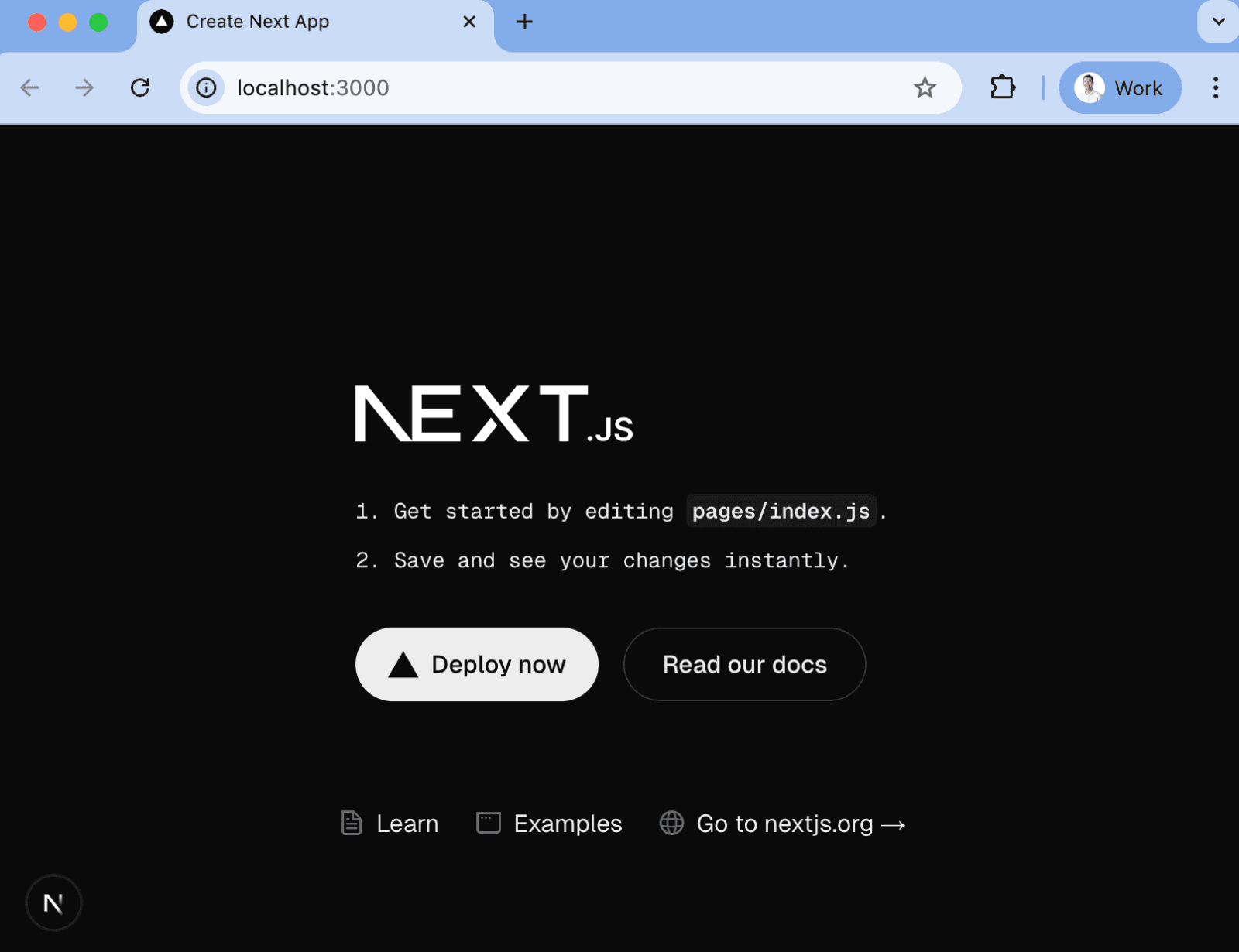
Adding blog functionality to our Next.js app
The structure of our blog will be:
- An index home page showing all the blog posts.
- Detail pages for each of the posts
We'll set up the blog posts as a static JSON file that we can fetch. To do this, create a blog.json file in the main app (pages-tutorial) folder and add the details of your blog. We need an id, title, content, and author. You can customize or add details to this if you want.
Next, the main app (pages-tutorial) folder, remove all the existing code in the pages/index.js file. Replace it with a component that uses the getStaticProps() method Next.js provides to get the posts from the blog.json file, then use map() to loop through and link to them. This looks like this:
This gives us a basic page with a list of links to the posts:
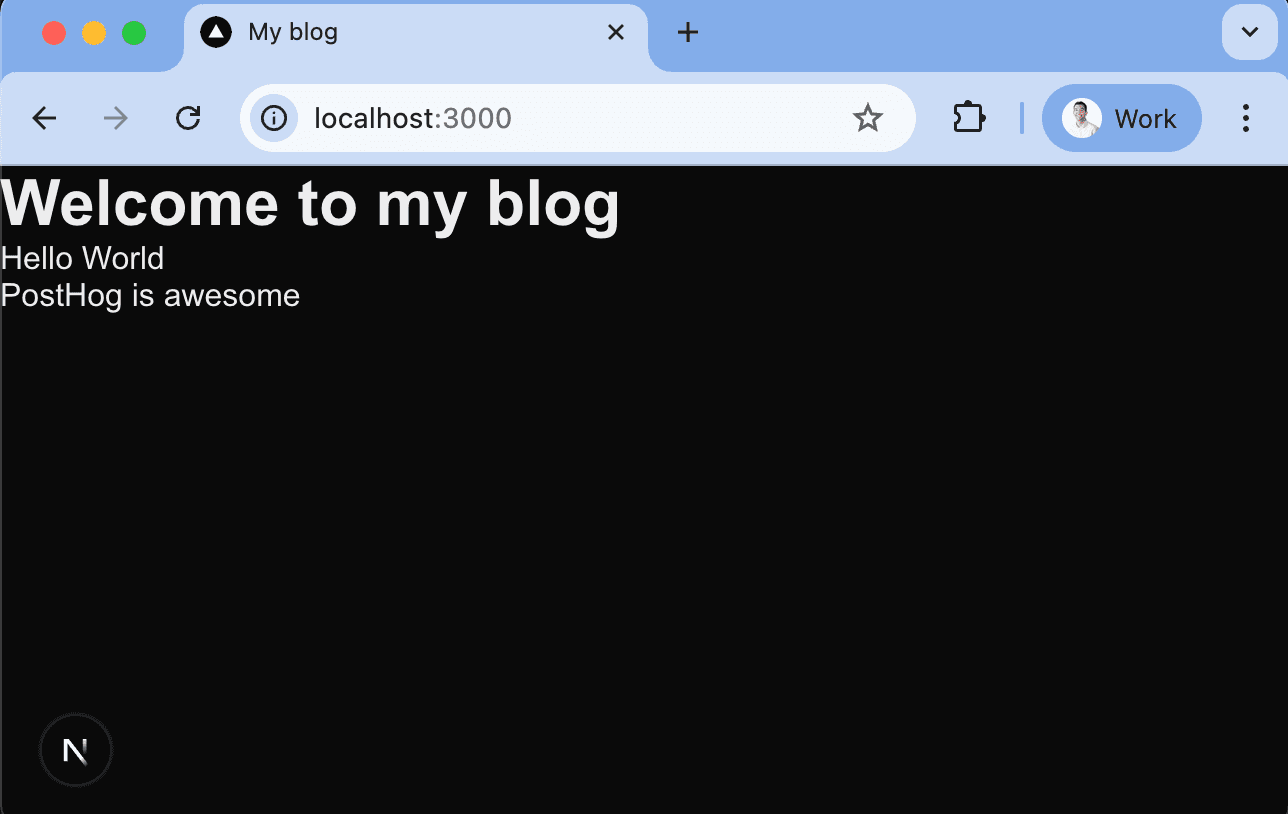
Each of these posts also needs their own page. We can use dynamic routes to do this.
To set them up, go to the pages directory and create a posts directory. In the posts directory, create a file named [id].js. This file is similar to our index.js file, but will:
- Handle the paths by calling the
getStaticPaths()method. - Pass the ID as a string to
getStaticProps()to get the right blog for the route. - Pass the post data to the component and render the data in HTML.
This looks like this:
Going back to our app, clicking on the links now brings us to a page that looks like this:
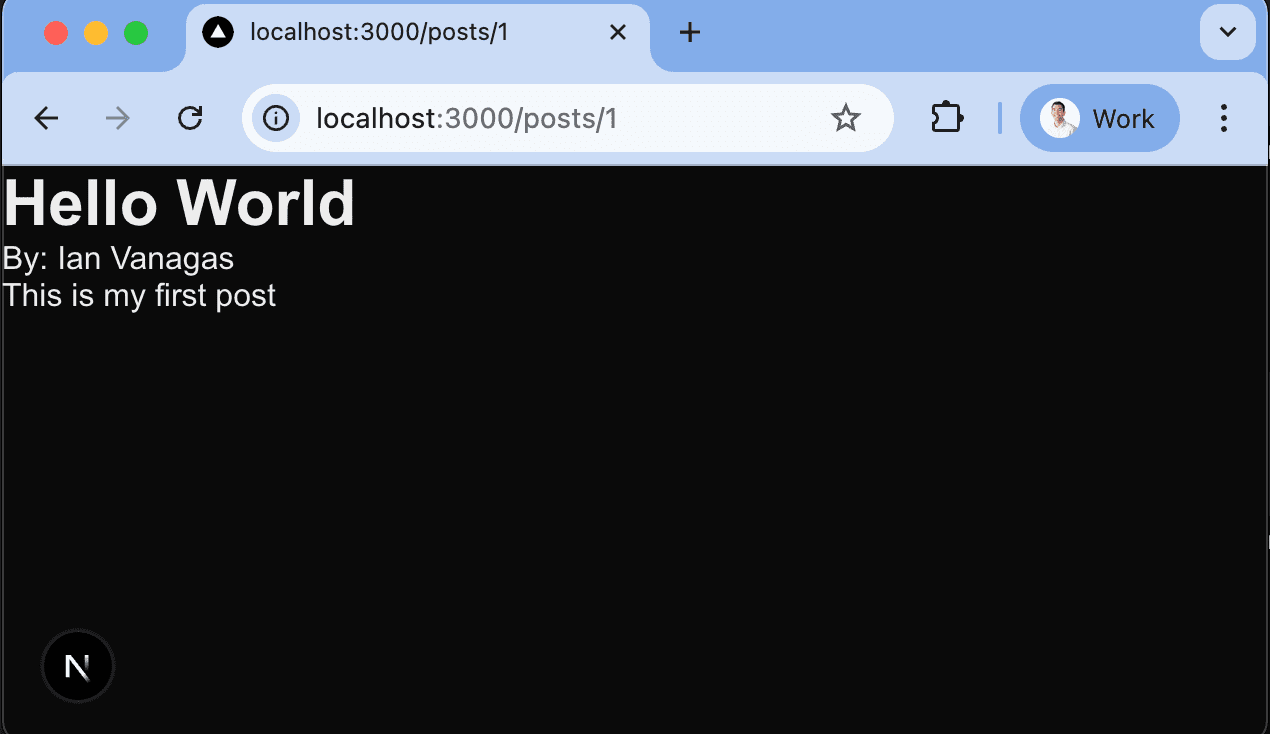
We now have our basic blog all set up.
Adding authentication
Next, we want to add user authentication with a basic login and logout. This provides us information on users so we can identify and connect events to them with PostHog later.
NextAuth makes it easy to set up authentication with a provider like GitHub. To do so, first, install next-auth:
Next, create an API route for next-auth to use. To do this, in our pages/api folder, create a folder named auth, then a file named [...nextauth].js inside it. Inside the file, set up the GitHub provider like this:
Next, get these details from GitHub by going to developer settings. Click New OAuth App, add a name, set the homepage URL to http://localhost:3000, the authorization callback URL to http://localhost:3000/api/auth/callback/github, and then click Register application.
Create a new OAuth app and get the client ID and client secret.
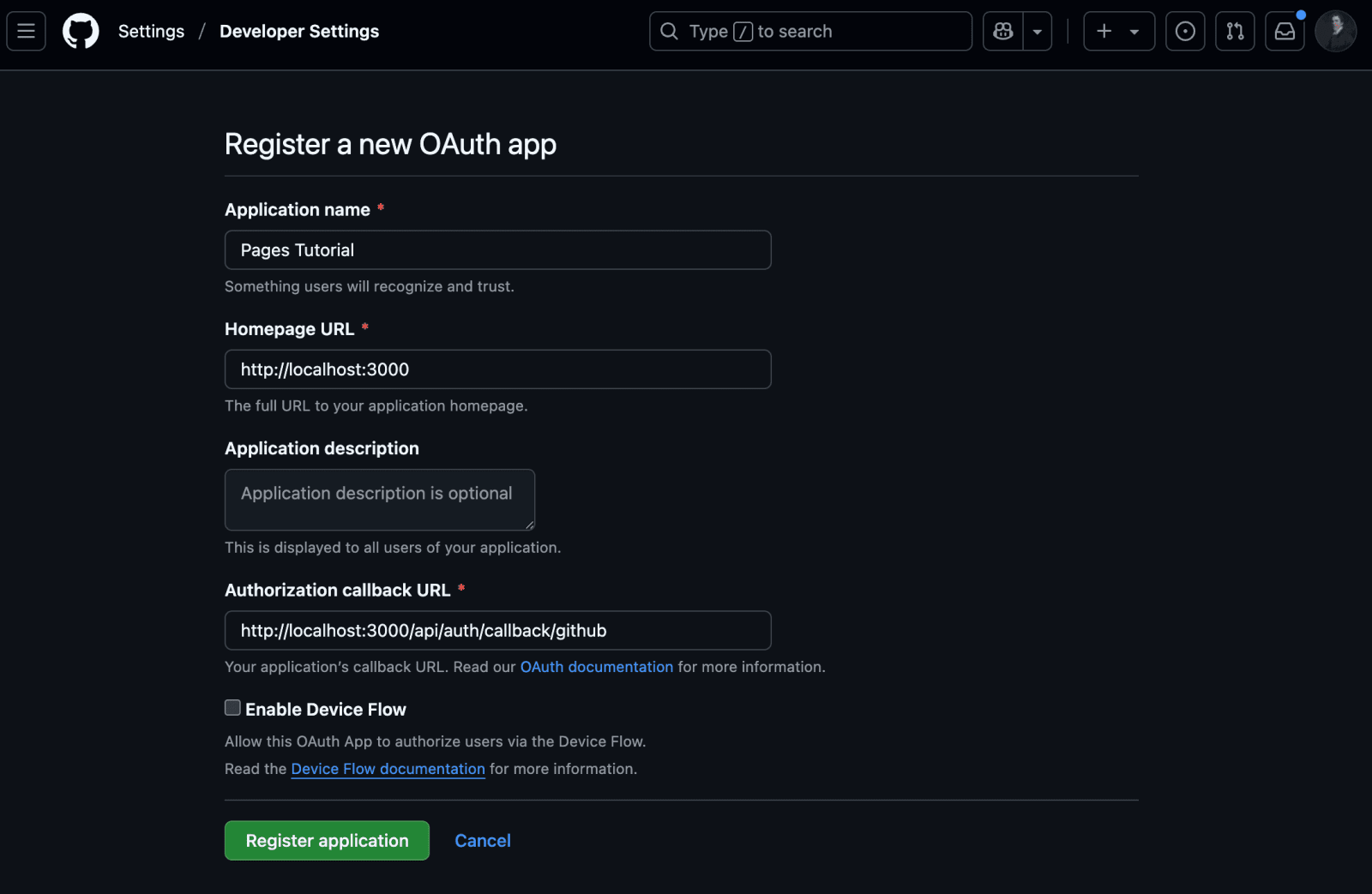
Copy the client ID and generate and copy a new client secret. With these, create a .env.local file in the main app (pages-tutorial) folder and set them as GITHUB_ID and GITHUB_SECRET. You'll also need to add a NEXTAUTH_URL (http://localhost:3000 for now) and NEXTAUTH_SECRET (which you can generate on this site or by creating a random 32-character string) value.
Setting up sessions
With NextAuth and GitHub set up, we have the infrastructure to authenticate users. Now, we can implement user sessions to let them log in and out as well as get their details.
The first step to doing this is adding a SessionProvider from next-auth/react to _app.js like this:
Next, add the session details, and the ability to sign in and out to our index.js page. We can do this with the NextAuth useSession() hook as well as its methods for signing in and out.
We set up a check to see if there is a session and show details about the user and a button to sign out. If there isn’t a session, we show a button to sign in. Together, it looks like this:
When you click sign in, you go through the sign in flow with GitHub, and get redirected back to the app with an active session.
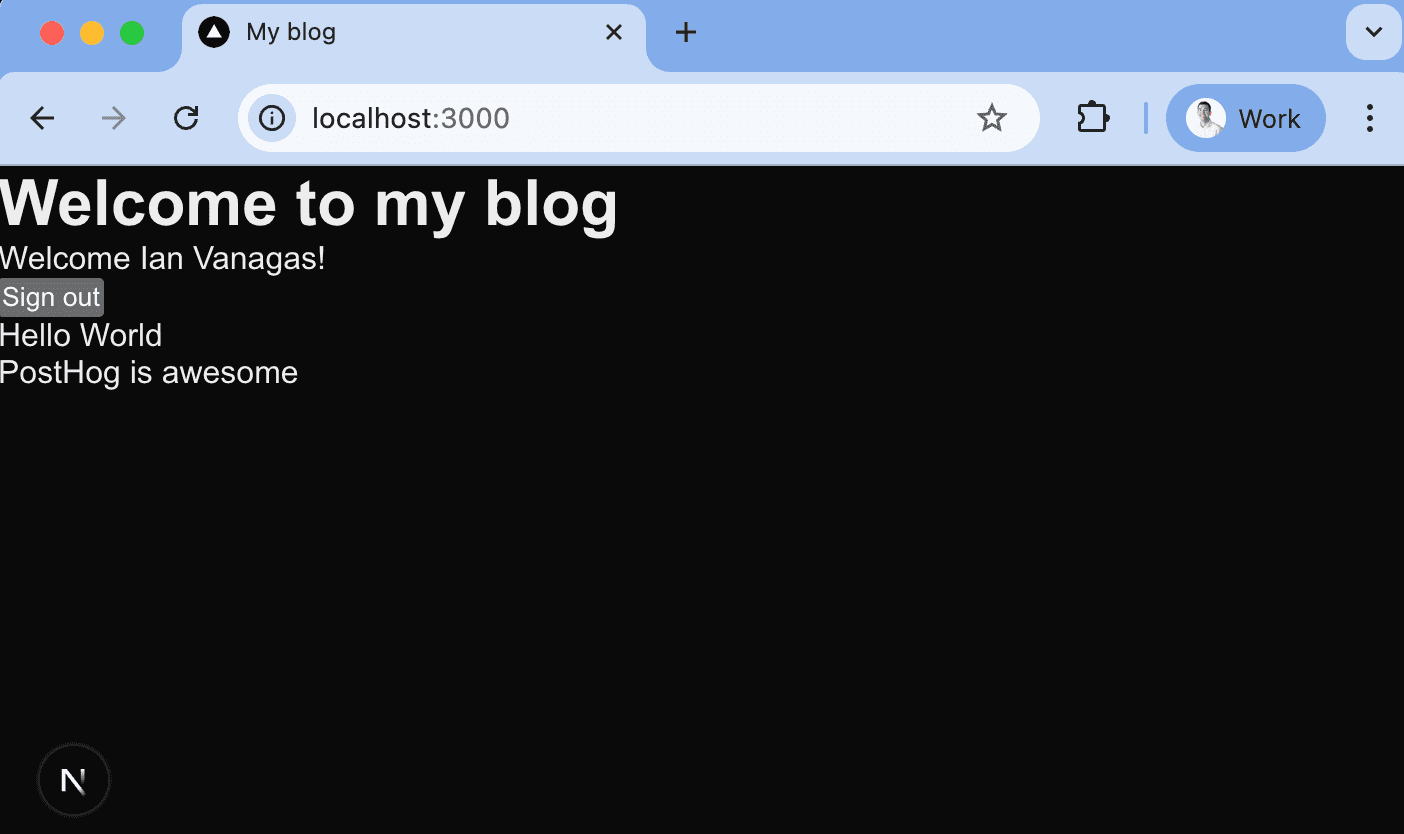
Once this is working, we have all the functionality we want in our Next.js app and it’s time to add PostHog.
Adding PostHog
At this point, you need a PostHog project (it's free to sign up). Once created, get your project API key and instance address from your project settings and add it to your .env.local file.
Next, install posthog-js and @posthog/react:
Afterwards, create an instrumentation-client.js file in the base pages-tutorial directory. This is where you initialize PostHog like this:
Using Next.js 15.2 or older?
Older versions of Next.js don't support instrumentation-client so you'll need to set up a PostHogProvider manually. See our Next.js docs for details on how to do this.
Once saved, restart your app and click around, you should see pageviews and events start to populate in your PostHog instance.


PostHog autocaptures clicks, inputs, session recordings (if enabled), pageviews, exceptions, and more. You can also use all the features of posthog-js which we will set up during the rest of this tutorial.
Capturing custom events
You can use PostHog's capture() method to capture custom events in your other components. For example, in posts/[id].js we can add a like button that includes the article details as properties.
To do this, create a button and connect it to a function that captures a post_liked event with the post title and author like this:
Go to a post, click Like, and then check your PostHog project's activity tab to see the custom event show up.


Identifying users
Even though you are logged in, you are still treated as an anonymous user by PostHog. This is because we haven’t set up user identification yet.
To connect anonymous user IDs with logged in user IDs, use an identify call with the email from their session. To do this, we must do a few things:
- Add a param to the
signInmethod to redirect back to a URL with a param telling us the user just signed in. - Check for that param using the router.
- Identify using
posthog.identifywithsession.user.email - Clear the params from the URL
Once we implement these changes, our index.js file now looks like this:
Now, when you sign in, this triggers an identify event in PostHog and events from the anonymous user connect with the identified person.


Resetting identification
Because of how identification works, logging out in the app does not automatically disconnect the person events are connected to. Events sent after you log out are still connected to your identified user, even if you log in as a new one. To reset identification, we must call reset() when a user logs out.
To set this up, we do something similar to what we did with user identification. We redirect to a URL with a signedOut param and then call reset if that param exists. This looks like this:
When you log out now, PostHog connects events to a new anonymous person. This person is disconnected from your old anonymous and identified person.


Be careful to only reset when a user logs out, not on every request. If you reset on every request, you create an excess of new anonymous users and new session recordings.
Setting up and using feature flags
The final feature of PostHog we are going to set up is feature flags.
There are multiple ways to implement feature flags in Next.js. We’re going to cover the two most important ways here: client-side rendering and server-side rendering. For both, we use them to show a call to action on our blog pages.
To start, create a feature flag in your PostHog instance. Go to the Feature flags tab, click the New feature flag, enter blog-cta as the key, set Release conditions to 100% of users, and press save.


This gives us a basic flag to add to our app.
Client-side rendering feature flags
We can use PostHog's isFeatureEnabled() method to check the flag and show the CTA, but we need to do this in a useEffect() to avoid hydration errors. This looks like this
When the blog-cta flag is enabled, you should see a call to action on your blog page.
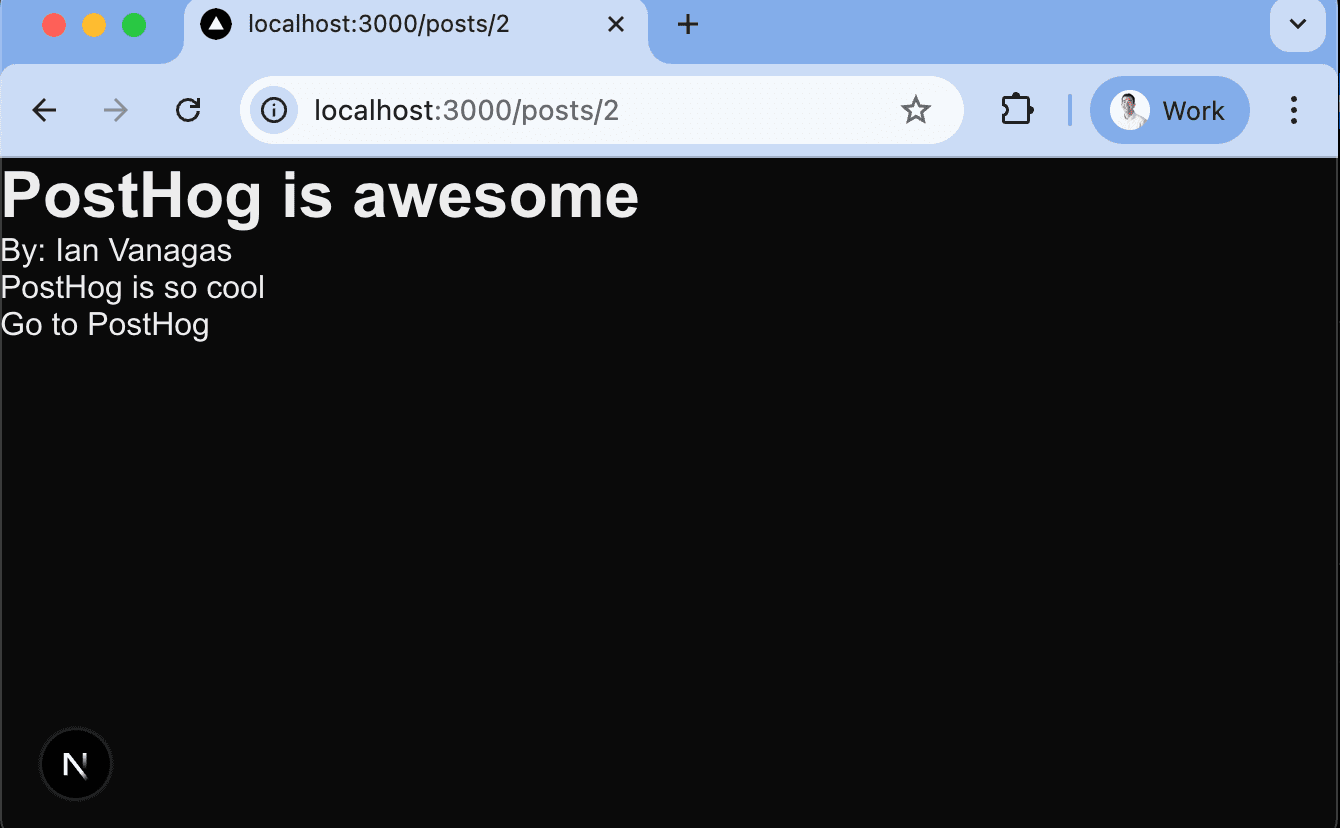
PostHog provides React hooks like useFeatureFlagEnabled and useFeatureFlagPayload, but we can't use them because they return false or undefined on the server but may return true immediately on the client. This causes a mismatch and hydration errors.
If you want to use them, you can either set up a mounted state check or wrap the component in a dynamic component.
Server-side rendering feature flags
When you reload the page, you might see that the CTA takes time to load. This flickering is because it takes time:
- For PostHog to load and initialize
- To request and evaluate the feature flags
- For the React client to update
The code we wrote in the client-side rendering section did all of this after the page initially loads, but there is a way to remove this and have the CTA display immediately on page load.
This is done by moving the flag evaluation to the server-side. And because flag evaluation happens on the server-side, we need to install the posthog-node library:
We then replace getStaticProps in [id].js with getServerSideProps. This enables us to both get the post details and evaluate feature flags on the server-side. In it, we use posthog-node to create a client that we use to getAllFlags using the session.user.email for the user. This means the user needs to be signed in for this to work.
Once we have the flag and post data, we pass it all to the component so it is ready before the client loads like this:
Now, once you reload your post page (while signed in), the CTA loads right away. If you wanted to, you could also set up anonymous distinct ID creation to evaluate flags for users who aren't signed in like we do in the flag bootstrapping tutorial.
Once done, you've successfully set up a basic Next.js app with user authentication and many of the features of PostHog set up. You’re ready to customize your app or add more of PostHog’s features like error monitoring, surveys, or experiments.
Further reading
- How to set up Next.js app router analytics, feature flags, and more
- How to use Next.js middleware to bootstrap feature flags
- An introductory guide to identifying users in PostHog

Subscribe to our newsletter
Product for Engineers
Read by 100,000+ founders and builders
We'll share your email with Substack









